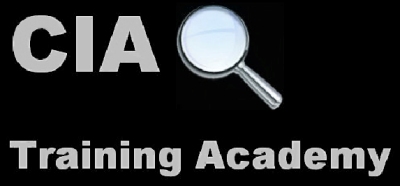
WHAT IT TAKES TO SUCCEED
As with many things in life, there
are no shortcuts to becoming a well trained, experienced professional in
the Cat adjusting industry. The top seasoned professionals make well in
the six-figures year after year, working an average of 3-4 months a
year. These professionals are not made overnight. The good news is
there’s not a lot of actual competition out there. With the lack of
quality, comprehensive training that most of the licensee’s are
receiving out there, it’s quite conceivable that if you are an
individual dedicated to being in the top ten percent in our industry,
that you will achieve just that. Let’s take a brief look at what we
believe are the elements required to make it into the top ten percent in
the Cat adjusting industry:
Character:
It’s no mistake that this
is the first trait that we chose to discuss. Personal integrity is
either something that you have, or you do not. Here’s the test: Are you
the type of individual that does the right thing, every time, regardless
of the cost – even when no one else is looking? Contrast that with the
individual that compromises at times, rather than doing the right thing,
because the cost is too high or because they simply don’t care. As an
adjuster has a fiduciary responsibility to the insurance carrier and the
policyholder when adjusting a claim and you must do the right thing,
every time.
Experience:
Experience can be summed up as know-how gained through getting out there
and, to paraphrase Nike, “Just doing it”. Whereas training is great -
experience is where the rubber hits the road. The paradox is, how does
one get experience without first getting the opportunity to get out
there and handle some claims (without having any experience yet)? It
certainly helps if you have a foundation of training on which to build
your experience on. Based on our experiences, we strongly believe that
apprenticeship is hands-down, the absolutely best way to enter the Cat
adjusting industry. A seasoned professional taking an inexperienced
licensee and teaching them the ropes is an invaluable benefit. An
individual fortunate enough to have such a scenario, very well may need
nothing more than to complete the Basic Pre-Licensing Course and get
their license. They will gain the experience necessary from their mentor
to become a great adjuster – provided of course that their mentor is a
great adjuster. Everything else that they need will be provided for or
taught by their mentor.
Training:
Obviously if you do not have a seasoned professional to take you under
their wing, you have to look for an alternative way of entering into the
industry. We believe that our Academy offers the next-best thing to the
apprenticeship avenue of entry into a Cat adjusting career. Having
mentored a number of apprentices in the field throughout the years, we
have become rather adept at knowing what the apprentice needs to know,
teaching them how to do what they need to accomplish, and even
explaining the why behind what we are teaching them. Since we obviously
cannot take dozens of apprentices under our wing at a time, we have
created what we believe to be an acceptable alternative. It is this
apprentice experience that we have attempted to duplicate in our
curriculum. As we discuss each course, we will address how that specific
course meets the needs of the student from an apprenticeship point of
view.
Tools:
You obviously have to have
the right tools to be able to perform your duties professionally as a
Cat adjuster. We have an entire section in our Residential Adjuster 101
workbook dedicated to a list of required tools as well as the specific
brands that we recommend based on our experiences down in the trenches.
Enrolled student can access the tools page with links on this website by
logging in first.
Drive:
To make it into the top ten percent of our industry, you have to hustle.
Those who take a relaxed, laid-back approach to their work simply will
not make great money in Cat adjusting – they may make very decent money
though, but will never launch themselves into the top ten percent. We
liken a catastrophe event with the harvest season in the agricultural
age. During harvest time, everyone knew that there was a limited amount
of time to get in the harvest. Once the season is over, it’s over, and
you cannot make up for lost time until next year at harvest time.
Likewise, once all the claims have been completed in a Cat event, then
they are done – time to pack up and go home. There won’t be any more
until the next Cat event – and who knows when that will be?
Get Out There and Get
To Work: Teddy
Roosevelt said, "It is not the critic who counts: not the man who
points out how the strong man stumbles or where the doer of deeds could
have done better. The credit belongs to the man who is actually in the
arena, whose face is marred by dust and sweat and blood, who strives
valiantly, who errs and comes up short again and again, because there is
no effort without error or shortcoming, but who knows the great
enthusiasms, the great devotions, who spends himself for a worthy cause;
who, at the best, knows, in the end, the triumph of high achievement,
and who, at the worst, if he fails, at least he fails while daring
greatly, so that his place shall never be with those cold and timid
souls who knew neither victory nor defeat."
Well said.
Speech at the Sorbonne, Paris, April 23,
1910
|





![]()
![]()
![]()
